 W
WThe Ameprod Television Game 10 is a dedicated first-generation home video game console that was produced in Poland by Elwro from 1978 to 1981. In 1981, the production was transferred to PPZ Ameprod. In 1980, the system was released by PPZ Ameprod. In the first three years, about 10,000 consoles were sold. In 1984, the production ended and about 100,000 Ameprod TVG-10 consoles were sold.
 W
WThe APF TV Fun brand is a series of dedicated home video game consoles manufactured by APF Electronics Inc. and built in Japan starting in 1976. The systems were among the first built on the General Instrument "Pong-on-a-chip", the AY-3-8500, that allowed many manufacturers to compete against the Atari Home Pong. The APF TV Fun consoles were one of the earliest pong clone consoles.
 W
WThe Atari Game Brain is an unreleased dedicated home video game console that was planned for release by Atari in June 1978. It plays 10 particular games, ported from all of Atari's previously released dedicated consoles, such as Pong, Stunt Cycle, and Video Pinball. Its controllers were built onto the system, with 4 directional buttons, a paddle, and a fire button. Games are inserted in the top of the system by opening a door that also bears a small instruction booklet.
 W
WThe BSS 01, also known as RFT TV-Spiel or simply TV-Spiel, is a dedicated first-generation home video game console that was released in 1980 or 1981 only in East Germany. It was manufactured between 1979 and 1980 by VEB Halbleiterwerk Frankfurt (Oder) and is credited the only video game console that was released in East Germany. Due to its high price, it rarely succeeded in private households and mostly delivered to youth centers, leisure and educational institutions.
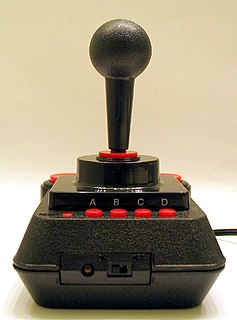 W
WThe C64 Direct-to-TV, called C64DTV for short, is a single-chip implementation of the Commodore 64 computer, contained in a joystick, with 30 built-in games. The design is similar to the Atari Classics 10-in-1 TV Game. The circuitry of the C64DTV was designed by Jeri Ellsworth, a computer chip designer who had previously designed the C-One.
 W
WThe Coleco Telstar Marksman, commonly abbreviated as Telstar Marksman, is a first-generation home video game console that featured a light gun. It was released by Coleco in 1978. Because it had a manufacturer-set number of games, it is considered a dedicated console. It was part of the Coleco Telstar series Pong-based home video game consoles; it is essentially a Coleco Telstar Colortron bundled with a "3 in 1" light gun and two shooting games. The Marksman light gun is a pistol that features an attachable stock and barrel. It is similar in this regard to the later-released Stack Light Rifle and the Sega Menacer. The elongated barrel included a simple aiming sight. In addition to the light gun, the system featured two paddle controllers built directly into the console. Its reported features included "on-screen digital scoring" and three different difficulty settings. It required two nine-volt batteries or Coleco's Perma Power AC adaptor to power the system.
 W
WThe Coleco Telstar brand is a series of dedicated first-generation home video game consoles produced, released and marketed by Coleco from 1976 to 1978. Starting with Coleco Telstar Pong clone based video game console on General Instrument's AY-3-8500 chip in 1976, there were 14 consoles released in the Coleco Telstar series. About one million units of the first model called Coleco Telstar were sold.
 W
WThe Color TV-Game series of five dedicated home video game consoles was created by Nintendo and released in Japan only. Nintendo sold three million units of the first four models: one million units of each of the first two models, Color TV-Game 6 and 15; and half a million units of each of the next two models, Block Breaker and Racing 112. The Color TV-Game series has the highest sales figures of all the first generation of video game consoles. The systems can run on C batteries or an AC adapter. It is also the first console to be released by Nintendo.
 W
WThe Game & Watch brand is a series of handheld electronic games developed, manufactured, released and marketed by Nintendo from 1980 to 1991. Created by game designer Gunpei Yokoi, the product derived its name from its featuring a single game as well as a clock on an LCD screen. The models from 1981 onwards featured an alarm in addition. The series sold a combined 43.4 million units worldwide, and was the earliest Nintendo video game product to gain major success.
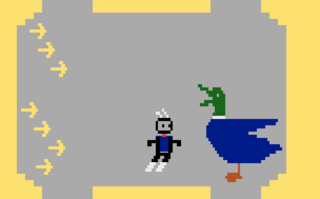 W
WHomebrew is a term frequently applied to video games or other software produced by hobbyists and amateur developers targeting proprietary hardware platforms that are not typically user-programmable or that use proprietary storage methods. Homebrew can include software made using unofficial, community maintained toolchains or games developed using official development kits such as Net Yaroze, Linux for PlayStation 2, or Microsoft XNA. A non-professional developer for a system intended to be consumer-programmable, like the Commodore 64, is simply called a hobbyist.
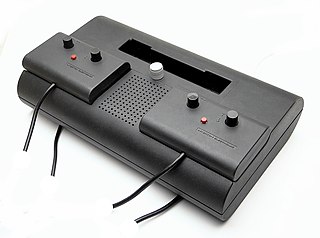 W
WThe Interton Video 2000 is a relatively rare dedicated first-generation home video game console that was released in 1975 by Interton in Germany. The console turns itself on automatically when a cartridge is inserted. This console was also one of the first cartridge-based consoles ever released in Europe.
 W
WThe Interton Video 2400 is a dedicated first-generation home video game console that was released in 1975 by Interton. It is the successor of the Interton Video 2000 and the predecessor of the Interton Video 2501. It could output only black and white. The consoles uses the AY-3-8500 chipset. The sound is played through an internal speaker, rather than the TV set.
 W
WThe Interton Video 2501 is a dedicated first-generation home video game console that was released by Interton in 1977. It is the successor of the Interton Video 2400 and the predecessor of the Interton Video 2800. It can output the games in color.
 W
WThe Interton Video 2800 is a dedicated first-generation home video game console that was released in 1977 by Interton. It could output only black and white. It is the successor of the Interton Video 2501 and the predecessor of the Interton Video 3000.
 W
WThe Interton Video 3000 is a dedicated first-generation home video game console that was released in Germany in 1976 by German manufacturer Interton and sold by Quelle. Due to the AY-3-8500 chipset from General Instrument, the console has six integrated games: Tennis, Football, Practice, Squash, Skeet and Moving target. It had a list price of 198 Deutsche Mark (DM).
 W
WThe Interton Video 3001 is a dedicated first-generation home video game console that was released in 1978 by Interton. It is a Pong clone console and the successor to the Interton Video 3000 and the predecessor of the Interton Video Computer 4000. It could output games in color.
 W
WNintendo Entertainment System: NES Classic Edition, known as Nintendo Classic Mini: Nintendo Entertainment System in Europe and Australia and Nintendo Classic Mini: Family Computer in Japan, is a dedicated home video game console by Nintendo, which emulates the Nintendo Entertainment System (NES). It launched on November 10, 2016 in Australia and Japan, and November 11, 2016 in North America and Europe. Aesthetically, the console is a miniature replica of the NES, and it includes a static library of 30 built-in games from the licensed NES library, supporting save states for all of them.
 W
WThe Ping-O-Tronic is a dedicated first-generation home video game console produced by Zanussi, an Italian home appliance company, and released under their Sèleco brand in late-1974 only in Italy. It was the first Italian video game console, excluding Magnavox Odyssey imports and clones.
 W
WThe PlayStation Classic is a dedicated video game console by Sony Interactive Entertainment that emulates games originally released on its 1994 PlayStation console. It was announced in September 2018 at the Tokyo Game Show, and released on December 3, 2018, the 24th anniversary of the release of the original. The console has been compared to competitor Nintendo's prior releases of the NES Classic Edition and Super NES Classic Edition mini consoles. Despite this, the console received mixed reviews from critics, with criticism for its weak game library, use of the original controller, use of PAL versions and high price tag; though the console's design did attract praise.
 W
WThe Sega Genesis Mini, known as the Mega Drive Mini in regions outside of North America, is a dedicated console modeled on Sega's Genesis. The Mini emulates the original console's 16-bit hardware, and includes 42 games ported by M2. It was released in North America and Japan in September 2019, and in Europe and the Middle East the following month.
 W
WSuper Nintendo Entertainment System: Super NES Classic Edition, known as Nintendo Classic Mini: Super Nintendo Entertainment System in Europe and Australia and the Nintendo Classic Mini: Super Famicom in Japan, and also colloquially as the SNES Mini or SNES Classic, is a dedicated home video game console released by Nintendo, which emulates the Super Nintendo Entertainment System. The console, a successor to the NES Classic Edition, comes with twenty-one Super NES titles pre-installed, including the first official release of Star Fox 2. It was released in North America and Europe on September 29, 2017.
 W
WThe Telejogo is a dedicated first-generation home video game console that was released on August 2, 1977 by Philco and Ford in Brazil. It is a Pong clone console and the first video game console ever released in Brazil. In 1979, a successor called Telejogo II was released.
 W
WThe Telejogo II is a dedicated first-generation home video game console that was manufactured by Philco and Ford and released in 1979 in Brazil as the successor to the 1977 video game console Telejogo.
 W
WThe Telescore 750 is a dedicated first-generation home video game console manufactured and released by Groupe SEB in 1977, only in France for 100 Franc. Two revisions were released afterwards; the Telescore 751 in 1978, identical to the Telescore 750 but with two detachable game controllers and support for a lightgun sold separately, and the Telescore 752 in 1979, which was almost identical to the Telescore 751 but could also display games in color and had the lightgun included.
 W
WThe Turnir is a dedicated first-generation home video game console that was manufactured by the Ministry of the Electronics Industry and released in 1978 only in the Soviet Union. It was manufactured between 1978 and 1982 and is the only known Soviet video game console that uses the AY-3-8500 chipset from General Instrument. The price for the system varied from 150 Soviet rubles in 1978 to 96 rubles in the late 1980s. The console uses an integrated AC adapter with a voltage of 9 volt and has a mass of 2.5 kg.
 W
WThe TV Boy and its successors TV Boy II and Super TV Boy are 1990s handheld TV games sold by many different companies, including Systema, Akor, and NICS, based upon an unlicensed clone of Atari 2600 hardware. They were widely available across Europe. In the UK they were most visibly available through Argos. They were released around 1992, and an improved version of the TV Boy 2, the Super TV Boy, was also made by Akor in 1995.
 W
WThe TV Tennis Electrotennis is a dedicated first-generation home video game console that was released by Epoch Co. in cooperation with Magnavox on September 12, 1975 for 19,000 Japanese yen only in Japan. It was the first video game console ever released in Japan.
 W
WThe TV Vader is a dedicated first-generation home video game console that was released by Epoch Co. in 1980 only in Japan for 15,000 or 16,500 Japanese yen. It is the successor of the 1978 released Cassette TV Game and the predecessor of the Cassette Vision. Due to the integrated NEC D774C chipset, only a colored clone of the 1978 game Space Invaders is playable with the system. A year later, the game was ported for the Cassette Vision under the name Battle Vader.
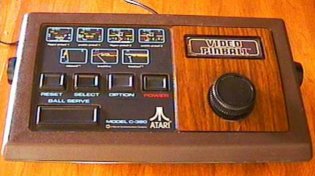 W
WThe Video Pinball brand is a series of first-generation single-player dedicated home video game consoles manufactured, released and marketed by Atari, Inc. starting in 1977. Bumper controllers on the sides or a dial on the front are used to control the games depending on the game selected. There are three game types in the first model of the Video Pinball series: Pinball, Basketball, and Breakout.
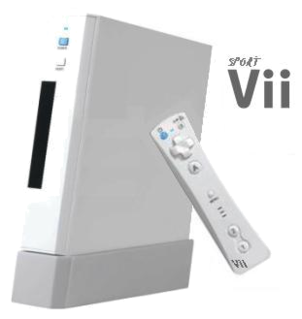 W
WJungleTac's Sport Vii is a Shanzhai video game console similar in aspect to Nintendo's Wii. It was originally released in China in 2007. The Vii was not intended to be a seventh-generation console like the Wii, and was instead part of the dedicated console genre of inexpensive consoles with built-in games.